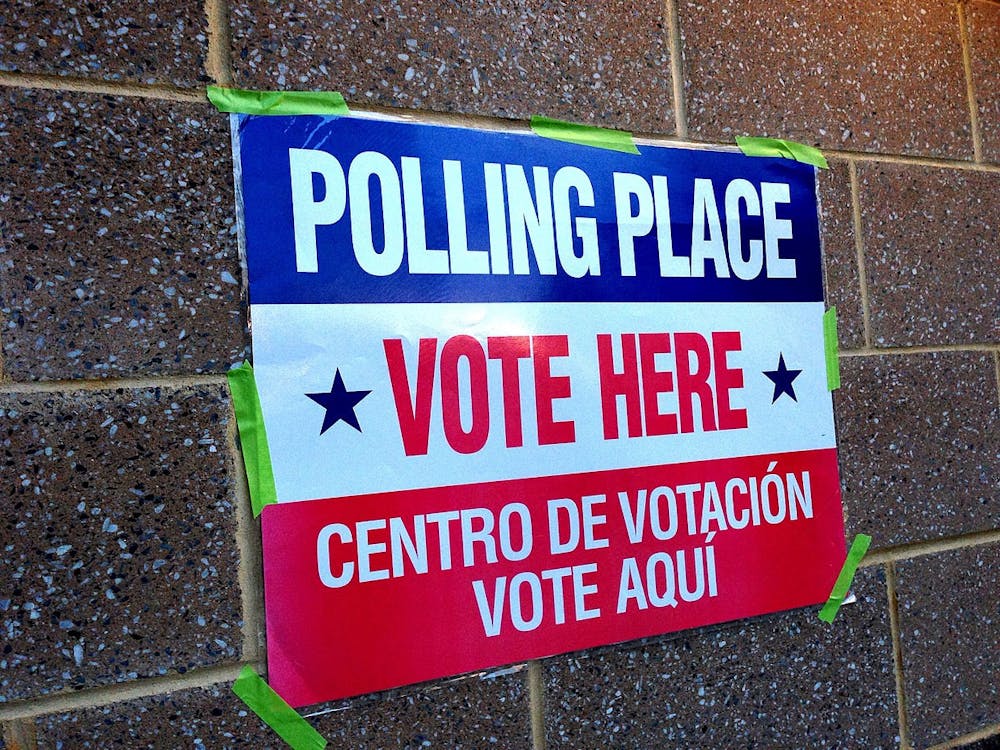As politicians have continued to amplify claims of fraudulent elections, faith in our election system has steadily declined in the past few years. Now more than ever, we need a voting system that incentivizes candidates to build bridges as opposed to planting seeds of doubt and confusion. Earlier this summer, voters in Arlington County were faced with ranked-choice voting for the first time — despite its challenges, ranked-choice voting could be the perfect step toward restoring voters’ confidence in our election system. While ranked-choice voting can combat political polarization by limiting negative campaigning and forcing candidates to appeal to the majority of the electorate, failure to appropriately implement this system can — and has — caused unnecessary confusion for voters. There must be better outreach methods taken in both Arlington County and across the state to better educate voters before a ranked-choice election. Otherwise, this method of voting will just add more confusion and uncertainty to an electoral system that is already fraught with distrust.
Arlington County was the first locality in Virginia to use ranked-choice voting since the General Assembly in 2020 passed HB1103, which allows cities and counties to use ranked-choice voting for local elections, like the one for Arlington’s County Board. When voting in the primary, Arlington voters were asked to rank the candidates in order of preference from first choice to third choice. In this ranked-choice system, all first-choice votes are counted. If no candidate receives a majority of the votes, then the candidate with the fewest number of votes is eliminated and the votes given to the eliminated candidate are passed to the voter’s next choice. This process continues until a candidate receives a majority of votes.
One of the major obstacles surrounding the implementation of ranked-choice voting is the fact that few people know how it works. Prior to the election, many people in Arlington County were confused about the system. The Arlington National Association for the Advancement of Colored People stated that the county had to “step up” and ensure voters were prepared before casting their vote. In the county’s resolution announcing the new procedure, the Arlington County Board members originally said they were committed and prepared to spend $50,000 of the county’s funds for education materials on ranked-choice voting. Ultimately, this never happened. The Virginia Department of Elections took on the task of creating educational materials — saving Arlington County from having to use its own funds. Still, politicos and organizations like the local NAACP were disappointed by the lack of follow through by leaders in Arlington County, and rightfully so, because the state’s education efforts were insufficient in its attempts to adequately prepare the electorate for the ranked-choice election.
Due to general confusion and lackluster outreach, Arlington county will not be using ranked-choice voting for November’s general election. This is not surprising when you consider the fact that days before voters were supposed to head to the polls in the recent election, Arlington County residents voiced their concern that the ranked-choice system was “insane” and being implemented to cause chaos. These worries could have been easily dispelled had voters been appropriately educated prior to election day. The confusion in Arlington highlights that successful implementation of ranked-choice voting requires an all-hands-on-deck education effort — local lawmakers must leverage their familiarity with their constituents to craft outreach efforts that meet voters exactly where they are. These efforts do not have to be merely the state’s responsibility or the county’s. The county and the state’s failure to recognize that they both shared the burden of ensuring the success of this new voting method has undermined public confidence in ranked-choice voting, likely decreasing the chance that other localities will try and implement this system any time soon.
This is an unfortunate reality. Ranked-choice voting is a way for voters to still have a say in who gets elected, even if their first pick does not win a majority of votes. This voting method also encourages candidates to appeal to the entire electorate rather than their already existing supporters, causing candidates to be more civil when campaigning since being a voter’s second pick can also lead to victory. Further, it can also encourage the emergence of third-party candidates, which in turn prevents political polarization and extremism. All of this makes ranked-choice voting more democratic than traditional voting by allowing minority voices to be heard at the polls by ensuring their ballots live past just one checked box.
Arlington County’s primary was the first venture into Virginian ranked-choice voting, but more has to be done to better educate voters about the benefits of the system as well as how the system works. Even if the Virginia Department of Elections created educational resources about the process of ranked-choice voting, there are still barriers that exist that can only be effectively addressed with extensive local outreach programs. The lack of such, as demonstrated by Arlington County, has the capacity to prevent the implementation of ranked-choice voting in Virginia for the foreseeable future. Now, more than ever before, counties and states must work to ease people’s minds about the validity of elections and the electoral process.
Apal Upadhyaya is an Opinion Writer who writes on Politics for The Cavalier Daily. She can be reached at opinion@cavalierdaily.com.





